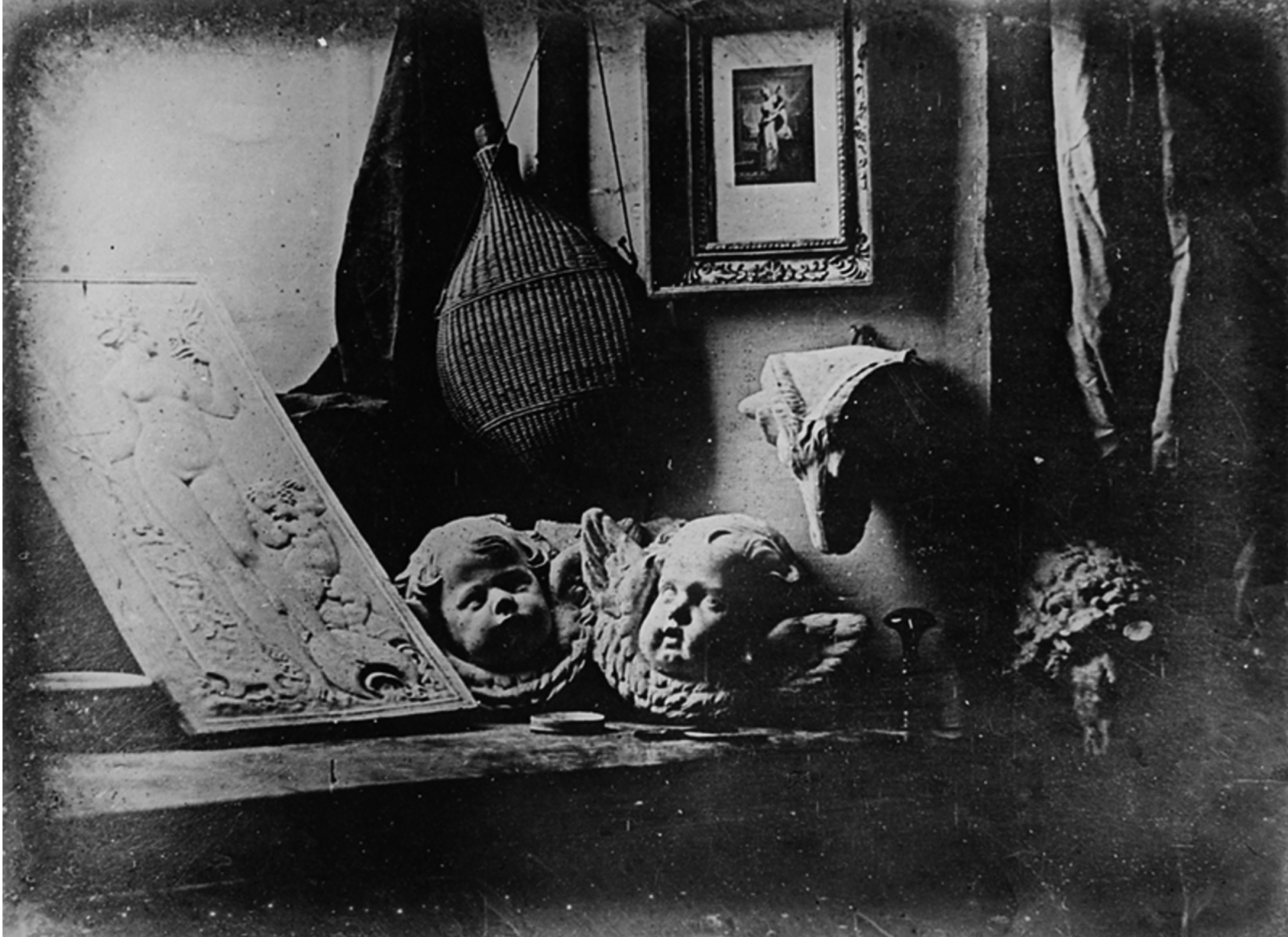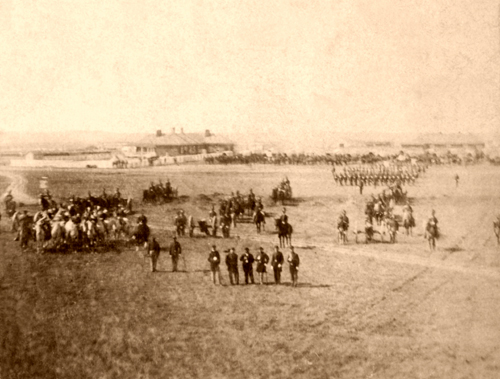 The daguerreotype was the first commercially successful photographic process, but it wasn't reproducible. The image is a direct positive made in the camera on a silvered copper plate. The surface of a daguerreotype is a silver plate that resemble a mirror.The French Academy of Sciences announced the daguerreotype process on 1839 and soon it became famous in Europe and im United States. The Daguerrotype process replace the camera obscura.
The daguerreotype was the first commercially successful photographic process, but it wasn't reproducible. The image is a direct positive made in the camera on a silvered copper plate. The surface of a daguerreotype is a silver plate that resemble a mirror.The French Academy of Sciences announced the daguerreotype process on 1839 and soon it became famous in Europe and im United States. The Daguerrotype process replace the camera obscura.L'Atelier de l'artiste. An 1837 daguerreotype
by Daguerre, claimed to be the first to
complete the full process
Daguerreotype camera built by La Maison Susse Frères in 1839, with a lens by Charles Chevalier
The albumen print was invented in 1850 and was the first commercially exploitable method of producing a photographic print on a paper base from a negative. the main ingredient is the eggs' album, that bind the photographic chemicals to the paper. the albumen process die out in the 20th century.
The Hypaethral Temple, Philae, by Francis Frith
A stereogram is any image that, through one of several techniques, is able to convey the experience of depth perception to the viewer by means of stereopsis for binocular vision. Originally, stereogram referred to a pair of stereo images which could be viewed using a stereoscope. Nowadays, there are many other methods to display stereoscopic images. they were popular in early 1900s.
In this Norman Rockwell painting, a boy is seen using a Holmes-type stereoscope to explore Egyptian historical sites.
4. What is a "carte de visite?" What were they used for?
The carte de visite was a type of small photograph which was patented in Paris, France by photographer André Adolphe Eugène Disdéri in 1854. The carte de visite photograph proved to be a very popular item during the American Civil War. Soldiers, friends and family members would have a means of inexpensively obtaining photographs and sending them to loved ones in small envelopes.
Alexander Gardner was a Scottish photographer who moved to the United States in 1856, where he began to work full-time in that profession. He is best known for his photographs of the American Civil War, American President Abraham Lincoln, and the execution of the conspirators to Lincoln's assassination.
Mathew B. Brady was one of the most celebrated 19th century American photographers, best known for his portraits of celebrities and his documentation of the American Civil War.
Mathew
Alexander








